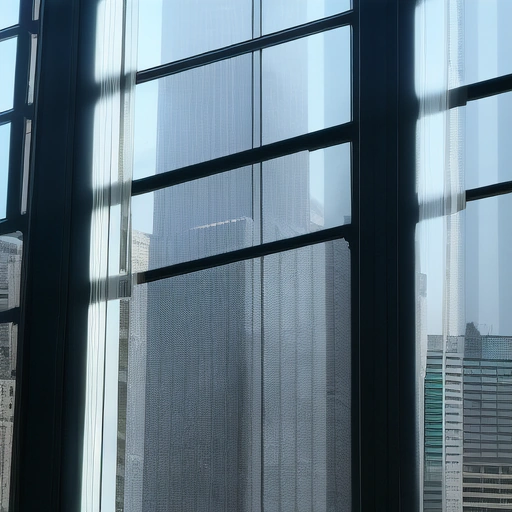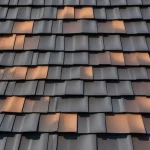Comprehensive Guide: Selecting Energy-Efficient and Noise-Reducing Windows for New York City Homes in 2025
Finding Serenity: The Quest for Quiet and Efficiency in NYC Windows
New York City, a relentless symphony of sirens and a concrete jungle reflecting both innovation and its own distinct echoes, presents unique challenges for homeowners seeking tranquility and energy efficiency. As we approach 2025, the demand for windows that can simultaneously combat noise pollution and minimize energy consumption is reaching a fever pitch. Imagine a sanctuary within your apartment, shielded from the cacophony of traffic and the bite of winter winds. This isn’t just a pipe dream; it’s an achievable reality through careful window selection.
But navigating the maze of materials, styles, glazing options like double-pane windows and triple-pane windows, and stringent NYC building codes can be daunting. This comprehensive guide serves as your compass, providing the knowledge and insights needed to make informed decisions, transforming your home into a haven of peace and energy savings. Investing in energy-efficient windows and noise-reducing windows in NYC is more than just a home improvement project; it’s a strategic decision that impacts your comfort, finances, and the environment.
Consider that older, single-pane windows can account for up to 30% of a home’s energy loss, according to the U.S. Department of Energy. By upgrading to energy-efficient windows, homeowners can significantly reduce their heating and cooling bills, contributing to a substantial window ROI over time. Furthermore, the enhanced soundproofing provided by modern window technologies, such as laminated glass, creates a more peaceful and productive living environment, a priceless asset in the bustling metropolis. The process of window replacement and window installation in NYC requires careful consideration of several factors, including the building’s architectural style, local regulations, and the specific needs of the homeowner.
Choosing the right window material – whether it’s vinyl windows for their affordability and low maintenance, wood windows for their classic aesthetic, aluminum windows for their strength, or fiberglass windows for their durability – is a critical first step. This guide will delve into the pros and cons of each material, providing practical advice on selecting the best option for your unique circumstances. Understanding NYC building codes is also paramount, as these regulations dictate the types of windows that are permitted and the installation standards that must be met.
Ultimately, the goal is to empower you to make informed choices that align with your budget, lifestyle, and aesthetic preferences. Whether you’re seeking to minimize noise pollution reduction, maximize energy savings, or enhance the overall value of your property, this guide will provide the tools and knowledge you need to succeed. From understanding the nuances of window ROI to navigating the complexities of NYC building codes, we’ll equip you with the expertise to transform your home into a tranquil and energy-efficient oasis in the heart of the city.
Material World: Navigating Vinyl, Wood, Aluminum, and Fiberglass
The choice of window material is the bedrock upon which performance is built. In NYC, where temperature fluctuations and architectural diversity reign supreme, selecting the right material is paramount. Vinyl windows, often the most budget-friendly option, offer excellent insulation and require minimal maintenance, making them a popular choice for homeowners seeking energy-efficient windows on a budget. However, their aesthetic limitations might clash with the character of older brownstones, potentially impacting window replacement ROI in historic districts.
Wood windows, prized for their natural beauty and superior insulation, demand regular upkeep to combat rot and insect infestation, a significant consideration given NYC’s humid summers. Aluminum windows, known for their strength and durability, are susceptible to thermal bridging, making them less energy-efficient unless paired with thermal breaks, a crucial detail for adhering to NYC building codes regarding energy conservation. Fiberglass windows, a rising star, combine the strength of aluminum with the insulation of wood, offering a compelling balance of performance and longevity.
Each material presents a unique risk-reward profile, influencing not only energy bills but also long-term maintenance costs and aesthetic appeal. “We’re seeing a surge in demand for fiberglass windows,” notes Maria Rodriguez, owner of ‘City Windows NYC’, “Homeowners are realizing the long-term value outweighs the initial investment, especially with rising energy costs.” Beyond the basic material properties, consider how the material interacts with noise pollution reduction strategies. For instance, while aluminum offers structural rigidity ideal for supporting heavy, multi-pane glazing, its inherent conductivity can transmit vibrations, potentially undermining the benefits of noise-reducing windows.
Wood and fiberglass, with their superior damping characteristics, naturally absorb sound waves, contributing to a quieter indoor environment. Furthermore, the choice of material impacts the ease of window installation and compliance with NYC building codes. Certain materials may require specialized installation techniques or hardware, adding to the overall cost and complexity of the window replacement project. Careful consideration of these factors is essential for maximizing window ROI and ensuring long-term satisfaction. For homeowners prioritizing noise reduction, laminated glass paired with specific frame materials can yield impressive results.
Laminated glass, consisting of two or more layers of glass bonded together with a plastic interlayer, effectively dampens sound vibrations. When combined with a dense, well-sealed wood or fiberglass frame, the resulting window assembly provides a formidable barrier against unwanted noise. Vinyl windows can also achieve excellent noise reduction when properly designed with multiple air chambers and high-quality weatherstripping. However, it’s crucial to verify that the chosen window system has been independently tested and certified for sound transmission class (STC) rating, a key metric for evaluating noise pollution reduction performance.
Ignoring this aspect can lead to disappointment and a diminished window ROI, particularly in noisy urban environments. Finally, remember that the best window material is not solely determined by its inherent properties but also by its compatibility with the building’s architectural style and the homeowner’s aesthetic preferences. While energy efficiency and noise reduction are paramount, the windows should also complement the overall design of the home. In historic districts, NYC building codes may impose restrictions on window materials and styles to preserve the architectural integrity of the neighborhood. Consulting with a qualified window contractor who is familiar with local regulations and design guidelines is essential for making informed decisions and ensuring a successful window replacement project.
Style and Space: Choosing the Right Window Style for Urban Living
NYC apartments and townhouses present spatial constraints that demand clever window solutions. Double-hung windows, a classic choice, offer versatility and ease of cleaning, but their ventilation capacity is limited. Casement windows, hinged on the side, maximize airflow and provide unobstructed views, making them ideal for smaller rooms. Awning windows, hinged at the top, offer ventilation even during light rain, a boon for kitchens and bathrooms. Sliding windows, a space-saving alternative, are easy to operate but may not seal as tightly as other styles.
The optimal choice hinges on balancing space maximization, natural light infiltration, and ventilation needs. “Consider the window’s function within the room,” advises David Chen, lead designer at ‘Manhattan Window Solutions’. “A casement window in a small bedroom can dramatically improve airflow, while a picture window in a living room can flood the space with natural light.” Beyond these common styles, consider the burgeoning trend of tilt-and-turn windows, popular in European designs and increasingly sought after for NYC homes.
These windows offer dual functionality, tilting inward for ventilation or swinging open completely for easy cleaning and egress. While potentially more expensive upfront, their enhanced functionality and tight seal contribute to long-term energy savings. For homeowners prioritizing noise pollution reduction, pairing tilt-and-turn windows with laminated glass can create a formidable barrier against city noise, significantly improving quality of life. The choice of window material – vinyl windows, wood windows, aluminum windows, or fiberglass windows – also plays a critical role in both aesthetics and performance.
When evaluating window replacement options, it’s crucial to factor in NYC building codes and their impact on window installation. Landmark buildings, for example, may have stringent requirements regarding window style and material to preserve architectural integrity. Understanding these regulations early in the process can prevent costly delays and ensure compliance. Moreover, the energy efficiency standards outlined in the building code often incentivize the installation of energy-efficient windows, such as double-pane windows or triple-pane windows with low-E coatings.
These upgrades not only contribute to a more comfortable living environment but also offer a tangible window ROI through reduced energy consumption. Consulting with a qualified contractor familiar with NYC-specific regulations is highly recommended. Ultimately, selecting the right NYC windows is a multifaceted decision that requires careful consideration of style, space, material, and performance. Prioritizing energy-efficient windows and noise-reducing windows can significantly enhance the comfort and value of your home. Investing in high-quality windows is an investment in your well-being and a step towards creating a more serene and sustainable urban living environment. Remember to weigh the upfront costs against the long-term benefits, including potential energy savings, increased property value, and improved quality of life. By carefully evaluating your needs and consulting with industry experts, you can make an informed decision that transforms your NYC home into a haven of peace and tranquility.
Silence is Golden: Noise Reduction Strategies with Glazing Options
The relentless hum of New York City necessitates robust noise reduction strategies, making the selection of appropriate glazing options paramount. Glazing serves as the frontline defense against unwanted sound intrusion. Double-pane windows, constructed with an air or gas-filled gap between two panes of glass, offer a significant improvement in noise dampening compared to single-pane alternatives. The air gap acts as a buffer, impeding sound wave transmission. For enhanced performance, consider argon or krypton gas fills, which further reduce sound and improve the energy efficiency of the window.
These energy-efficient windows are a crucial investment for homeowners seeking respite from the urban soundscape. When considering window replacement, understanding these glazing technologies is key to maximizing your window ROI. Triple-pane windows elevate noise reduction to an even higher level, though typically at a greater upfront cost. The added pane creates an additional barrier, effectively minimizing sound penetration. Laminated glass, featuring a layer of polyvinyl butyral (PVB) sandwiched between two panes, excels at absorbing sound waves.
The PVB layer acts as a dampening membrane, converting sound energy into negligible heat. For optimal noise pollution reduction, consider combining laminated glass with double or triple-pane configurations. Such combinations are particularly effective against low-frequency sounds, such as traffic rumble, which are notoriously difficult to block. Selecting the right combination of glazing and frame material, be it vinyl windows, wood windows, aluminum windows, or fiberglass windows, is a critical decision in achieving desired noise reduction.
The benefits of noise-reducing windows extend far beyond mere tranquility; reduced noise pollution contributes to improved sleep quality, reduced stress levels, and overall well-being. Studies have consistently shown a correlation between noise exposure and adverse health outcomes, making the investment in soundproofing a worthwhile endeavor. Furthermore, emerging technologies offer even more sophisticated solutions. Triboelectric devices, for instance, can absorb low-frequency sound waves, as demonstrated in a Physics World article highlighting a fibrous composite foam that employs the triboelectric effect and in situ electrical energy dissipation. Integrating such innovations with modern window designs promises even greater noise mitigation. When planning window installation, be sure to factor in NYC building codes, which may have specific requirements for noise reduction in certain areas. Carefully evaluating your needs and the available options will ensure you select the most effective noise-reducing windows for your NYC home.
The Bottom Line: Cost-Benefit Analysis and Return on Investment
Investing in energy-efficient and noise-reducing windows is a long-term proposition. A cost-benefit analysis must consider upfront costs, potential energy savings, and the impact on property value. While high-performance windows command a premium, the resulting reduction in heating and cooling costs can lead to substantial savings over time. Moreover, upgraded windows enhance curb appeal and can increase property value, offering a significant return on investment. The precise ROI varies depending on factors such as window type, climate zone, and energy consumption habits.
However, studies consistently demonstrate that energy-efficient upgrades are a worthwhile investment, particularly in a city like New York, where energy costs are high and building codes are becoming increasingly stringent. “Homeowners often underestimate the long-term savings,” states Sarah Lee, a financial analyst specializing in home improvements. “Factor in reduced energy bills, potential tax credits, and the increased resale value, and the investment in high-performance windows becomes a no-brainer.” Quantifying the ROI on energy-efficient windows requires a multi-faceted approach.
Consider, for example, a brownstone owner in Brooklyn replacing single-pane, aluminum windows with energy-efficient, double-pane vinyl windows featuring a low-E coating and argon gas fill. The upfront cost for window replacement, including window installation, might be $15,000. However, the annual savings on heating and cooling could range from 15% to 25%, translating to $500-$1000 annually based on average energy consumption. Furthermore, the enhanced noise pollution reduction from double-pane windows, especially those with laminated glass, directly contributes to improved quality of life, a factor increasingly valued by NYC residents.
This translates to a tangible, if less quantifiable, benefit. Beyond energy savings, the impact of adhering to NYC building codes also influences the window ROI. Local Law 97, for instance, sets increasingly stringent energy efficiency standards for buildings. Upgrading to energy-efficient windows helps properties comply with these regulations, avoiding potential fines and penalties. Moreover, various tax credits and rebates are available for homeowners who invest in energy-efficient upgrades. These incentives can significantly reduce the initial investment, further accelerating the payback period.
For example, the federal tax credit for energy efficiency can offset a percentage of the window replacement cost. Exploring these financial incentives is crucial for maximizing window ROI. Considering both immediate financial benefits and long-term regulatory compliance, the investment in high-quality NYC windows becomes even more compelling. Finally, remember that the choice of window material significantly affects both cost and ROI. While wood windows offer aesthetic appeal and good insulation, they require more maintenance than vinyl windows or fiberglass windows.
Aluminum windows, while durable, are less energy-efficient unless thermally broken. Therefore, a careful evaluation of material properties, coupled with an understanding of long-term maintenance costs, is crucial. For instance, opting for triple-pane windows over double-pane windows might increase the initial cost, but the enhanced noise reduction and superior energy efficiency could justify the higher investment, particularly in areas with extreme noise pollution or temperature fluctuations. Ultimately, the optimal window choice and the resulting ROI depend on individual needs, budget constraints, and long-term goals.
Installation and Regulations: Navigating NYC’s Unique Challenges
Installing new windows in NYC involves navigating a labyrinth of regulations and logistical hurdles. Obtaining the necessary permits is crucial, and requirements vary depending on the scope of the project and the building’s landmark status. Installation considerations include proper sealing to prevent air and water leaks, ensuring compliance with fire safety codes, and minimizing disruption to neighbors. Hiring a qualified and experienced contractor familiar with NYC building codes is essential.
Before embarking on a window replacement project, homeowners should obtain multiple quotes, verify contractor licenses and insurance, and carefully review the contract. “Don’t cut corners on installation,” warns Michael Brown, a licensed contractor with ‘Empire State Window Installers’. “Improper installation can negate the benefits of even the most high-performance windows and lead to costly problems down the road.” By carefully considering these factors, homeowners can ensure a smooth and successful window replacement project, transforming their NYC homes into havens of peace, comfort, and energy efficiency.
Beyond the basic requirements, navigating NYC building codes also means understanding the specific energy efficiency standards mandated for window replacement. The city’s commitment to sustainability means that all new window installations must meet stringent U-factor and Solar Heat Gain Coefficient (SHGC) requirements, directly impacting the choice of energy-efficient windows. Furthermore, landmarked buildings often have additional restrictions on window materials and styles, potentially limiting options to wood windows or specific historical designs. Failing to comply with these regulations can result in hefty fines and mandatory rework, making pre-approval consultations with the Department of Buildings a worthwhile investment.
The selection of the right window installation team is as crucial as choosing the windows themselves. Look for contractors with specific experience installing noise-reducing windows in dense urban environments. These specialists understand the nuances of working in tight spaces, minimizing noise pollution reduction during the installation process, and ensuring a perfect seal to maximize both energy efficiency and sound dampening. A seasoned installer will also be adept at handling the unique challenges posed by older buildings, such as uneven openings and the presence of asbestos, requiring specialized abatement procedures.
Investing in a reputable window installation company, even if it means a higher initial cost, can significantly improve the window ROI by preventing future problems. Finally, consider the long-term maintenance implications of your window replacement. While vinyl windows offer low maintenance, wood windows require periodic painting or staining to prevent rot and decay, especially crucial given NYC’s humid summers and harsh winters. Aluminum windows, known for their durability, may require specialized cleaning to prevent corrosion in coastal areas. Understanding these long-term costs and incorporating them into your initial cost-benefit analysis will provide a more accurate picture of the window ROI. Furthermore, explore options like laminated glass for enhanced security and noise pollution reduction, particularly beneficial for ground-floor apartments or buildings near high-traffic areas. Properly installed and maintained energy-efficient windows not only enhance comfort and reduce energy bills but also contribute to a more sustainable and resilient urban environment.


